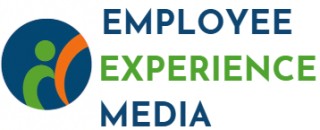Understanding the Customer Onboarding Journey
Mapping the Client Onboarding Path
In the insurance sector, understanding your customer onboarding journey is key to ensuring a smooth client experience from the first interaction. Unlike other industries, the complexity and high-stakes nature of the insurance domain make this initial process crucial.
Breaking down the onboarding path involves recognizing key touchpoints where insurance agencies and agents come into play. These interactions are vital in setting the tone for future engagements and determining the overall customer satisfaction.
To streamline this journey in the digital age, insurance companies increasingly rely on data and digital tools. This means not only automating tasks but also designing processes that cater to the needs and preferences of today's digital-savvy clients.
Here’s a quick summary of steps for effective client onboarding:
- Initial Contact: Ensure that the first touchpoint is welcoming and informative. This often involves initial meetings or communications where agents assess client needs.
- Information Gathering: Clients provide essential data, often through digital forms, which simplifies the process for both the customer and the agency.
- Customer Education: Introduce them to your policies and coverage through informative sessions or materials that answer their queries and align expectations.
- Confirmation and Review: Allow clients time to review their policy options, using checklists to ensure no detail is overlooked.
For those aiming for a seamless onboarding experience, it is also essential to integrate feedback mechanisms that permit ongoing improvements. As we discuss later, gathering and analyzing customer feedback will inform strategies that boost service quality and customer loyalty.
Achieving these objectives can significantly enhance customer onboarding satisfaction, setting a solid foundation for long-term policyholder relationships.
For more insights on enhancing new hire experiences, you can explore resources on how to improve
the experience of new employees. This understanding will help not only in framing customer-centric strategies but also in empowering employees committed to providing excellent service.
The Role of Employee Experience in Onboarding
Elevating the Role of Employees in Customer Onboarding
In the insurance sector, the success of the onboarding process significantly relies on the employee experience. When employees are engaged, adequately trained, and knowledgeable, they become vital contributors to creating a positive customer experience. Insurance companies must prioritize the development of their employees to ensure a seamless onboarding journey for their clients.
One key aspect is ensuring that employees, especially insurance agents, have a thorough understanding of the company's services, policies, and digital processes. This knowledge equips them to address customer queries effectively and instills confidence in the client's decision to choose the company's services.
Moreover, a comprehensive onboarding checklist for employees helps them navigate the often intricate procedures involved in the insurance onboarding process. This not only streamlines agency operations but also accelerates the time it takes to onboard clients, resulting in higher customer satisfaction.
It's also crucial for employees to be proficient with automation tools and digital onboarding platforms. Such technologies enhance productivity and enable real-time data access, contributing to a more efficient onboarding process. As part of the company's digital transformation strategy, empowering employees with the right tools is essential for maintaining service excellence and meeting the evolving expectations of insurance customers.
Additionally, creating a memorable employee onboarding experience plays a significant role in promoting a long-term positive work culture. Engaged employees are more likely to deliver superior customer service and contribute to the overall company success. You can explore further insights into enhancing employee experiences
here.
Fostering a supportive work environment encourages open communication, allowing employees to share feedback and innovate strategies for improving the onboarding process. By valuing their contributions, insurance agencies can develop best practices that lead to sustained client loyalty and organizational growth. This approach ultimately positions companies as industry leaders in customer centricity, driving continuous improvement and setting benchmarks in customer onboarding practices.
Training and Development for Onboarding Success
The Importance of Skillful Onboarding Training
In today's fast-paced insurance industry, the significance of comprehensive training cannot be understated in creating an effective onboarding experience. The success of the customer onboarding process hinges on the preparedness and expertise of employees handling it. Insurance companies are keenly aware that well-trained agents and staff are pivotal in providing superior customer service and ultimately driving client satisfaction.
Training programs within insurance agencies often encompass diverse subjects, from understanding complex policy terms to mastering digital platforms integral to the onboarding process. High-quality training can enable team members to efficiently utilize data and automation tools, streamlining the onboarding journey and improving the overall experience for the customer.
Incorporating best practices involves:
- Role-Specific Modules: Ensuring that training includes role-specific modules that help agents and employees become adept at addressing each client's unique needs.
- Ongoing Development: Creating a culture of continuous learning where agents can stay updated with the latest digital transformation trends and insurance regulations.
- Hands-On Experience: Providing opportunities for hands-on practice to build confidence and proficiency in technology-driven onboarding scenarios.
Improved agent and employee knowledge contributes not just to the company's expertise but also promotes a smoother, more efficient onboarding process. This in turn results in increased customer satisfaction as clients feel supported and understood during their initial interactions with the insurer.
For more insights on enhancing the experience of new employees, you can explore how robust employee experiences contribute to effective insurance customer onboarding.
Enhance the experience of new employees effectively within your organization to extend these benefits to clients as well.
Technology's Impact on Onboarding
The Influence of Technology in Revolutionizing Onboarding
Technology has undeniably transformed the landscape of customer onboarding in the insurance sector. By incorporating digital tools and data analytics, insurance agencies can streamline the onboarding process while enhancing the overall client experience.
One of the primary ways technology enhances onboarding is through automation. Automated systems allow companies to efficiently manage and track multiple aspects of the onboarding process, such as policy documentation, client data collection, and compliance checks. This not only saves time for both clients and agents but also reduces the likelihood of errors, thereby increasing customer satisfaction.
Additionally, the advent of digital onboarding solutions has provided a more convenient and accessible way for customers to engage with insurance services. Through digital platforms, clients can complete necessary paperwork online, access policy information, and receive real-time updates about their onboarding status. The result is a seamless experience that meets the demands of modern customers, who value efficiency and accessibility.
Many companies in the insurance industry also implement sophisticated data analytics during the onboarding phase. These analytics enable agencies to gather insights about client behaviors and preferences, allowing for a more personalized onboarding experience. By tailoring communication and service offerings, insurance agents can better meet the unique needs of each customer, fostering long-term relationships.
An agency that effectively integrates technology in its onboarding process sets itself apart in the competitive insurance landscape. Adopting best practices in digital transformation not only improves the onboarding experience but also positions the company as an innovative leader in customer service.
Overall, the role of technology in onboarding is crucial for the insurance sector to stay abreast of industry changes and respond to evolving client expectations. As companies continue to embrace digital tools, the future of client onboarding will likely witness even greater efficiencies and enhancements.
Feedback Mechanisms for Continuous Improvement
Continuous Improvement through Feedback Mechanisms
In the dynamic insurance industry, where customer expectations evolve constantly, feedback mechanisms are invaluable for the onboarding process. By collecting insights from clients, companies can refine their onboarding strategies to ensure superior customer satisfaction. Effective feedback loops play a critical role in enhancing the onboarding experience in insurance agencies.
To streamline the client onboarding process, it's essential for companies to harness both quantitative and qualitative data. This can be achieved through:
- Surveys and Questionnaires: Sending out surveys to gather customer insights about the onboarding procedures. This method tracks whether the information provided was clear, relevant, and timely.
- Digital Feedback Tools: Utilizing digital platforms allows clients to give immediate feedback after interacting with an agency's onboarding system. This real-time data collection can significantly enhance the customer experience.
- Regular Check-ins: Ensuring agents or representatives connect with customers post-onboarding to assess their satisfaction can create a more personalized experience. This step builds a stronger client relationship and encourages loyalty.
Moreover, companies adopting automation in their digital onboarding frameworks benefit from streamlined, efficient feedback analysis—allowing quicker adaptations and strategy refinements. Long-term success hinges on implementing best practices derived from this continuous feedback cycle.
In an era where digital transformation is paramount, insurance companies must acknowledge that the onboarding process isn't just a one-time event but an opportunity for ongoing relationship building and enhancement. Emphasizing feedback-driven improvements can lead to a seamless policy acquisition process, fostering trust and confidence among customers.
Case Studies: Successful Onboarding Strategies
Showcasing Proven Client Onboarding Strategies
In the insurance industry, several companies have distinguished themselves by refining their customer onboarding processes to maximize customer satisfaction. A well-executed onboarding experience not only sets the tone for the rest of the policy period but also contributes to client retention and loyalty in the long run. Here are some case studies highlighting successful strategies:
- Insurance Company A: By leveraging digital onboarding, this company streamlined their process, reducing the time for clients to fully integrate as policyholders. The automation of routine tasks allowed agents to focus on delivering personalized service, ensuring that each customer felt valued from the outset. Their use of data analytics to anticipate customer needs further enhanced the onboarding experience.
- Insurance Agency B: This innovative agency implemented a comprehensive checklist to guide clients through the onboarding process. By clearly outlining each step and maintaining open channels of communication, they were able to manage customer expectations effectively. Additionally, their commitment to regularly updating clients on policy changes fostered trust and transparency.
- Health Insurance Provider C: Specializing in health insurance, this provider prioritized training and development for their agents. This focus not only improved the overall service experience but also empowered agents to address complex client queries with confidence. By integrating technology, they facilitated a smoother onboarding journey, thus elevating customer satisfaction levels.
- Large Insurance Company D: Known for its comprehensive customer feedback mechanisms, this company continuously improves its client onboarding experience. Through surveys and digital feedback tools, they gather essential customer insights to refine their onboarding process, ensuring it meets the evolving needs of their clients.
These examples illustrate that the best practices in the insurance sector are centered around a customer-focused approach. Whether through investment in training programs or the adoption of digital solutions, companies that successfully onboard their customers are those who understand the crucial balance between technology and human touch. For businesses aiming to enhance their onboarding process, looking to these innovative strategies can be especially instructive.









